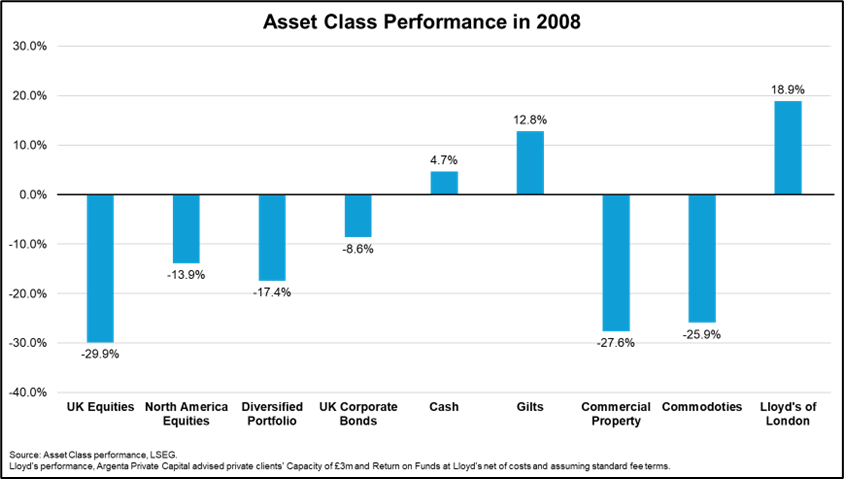About Us
Syndicate Management
Investing at Lloyd's
tax-corporate-services
News

Step into the eye-catching Richard Rodgers’ Lloyd’s of London building in EC3, and you are immediately struck by its unique combination of tradition and modernity. With its mix of expertise, technology and face-to-face trading, Lloyd’s is a London institution – and an investment opportunity unlike any other.
For the discerning and diversified private investor, Lloyd’s offers that rare thing: access to an alternative asset class that has often outperformed its more traditional peers.
It also comes with distinct tax advantages. These may be crucial in the coming months and years, as the Treasury comes under pressure to increase inheritance tax (IHT) receipts and speculation around further tax rises grows.
With receipts already at record highs, concerns around intergenerational planning are accelerating across the wealth management sector. This shift is reflected among clients at Argenta Private Capital Limited (APCL), with many bringing family members into their Lloyd’s investment earlier than originally anticipated.
Investments at Lloyd’s can qualify for business relief, reducing exposure to IHT. Even with the Autumn 2024 Budget announcement to restrict IHT relief of 100 per cent on the first £1 million, and 50 per cent relief thereafter from April 2026, this effectively creates a 20 per cent tax rate, which remains attractive on a Lloyd’s investment.
Moreover, a Lloyd’s portfolio typically suits a long-term horizon. Such tenure creates a tax-efficient asset, capable of transitioning smoothly across generations – a process our team of client and tax specialists supports with care and expertise.
In times when volatility is the only constant, Lloyd’s has the capability to deliver where it matters most: returns.
The market’s most recent results, published in March 2025, revealed an impressive pre-tax profit of £9.6 billion for the 2024 year of account. The outlook for 2025 remains solid, with the market positioned to deliver another strong result for capital providers.
Lloyd’s offers something genuinely different: insulation from wider economic factors that occasionally buffet traditional markets.
During the financial crisis of 2008, APCL clients maintained an average return on capital of 18.9 per cent. Even during the pandemic-induced sell-off of 2020, when UK equities fell 14.3 per cent, APCL clients enjoyed positive capital returns of 3.6 per cent. While Lloyd’s is also capable of losses, this low correlation to traditional markets offers investors an effective hedge against the rest of their portfolio.

One of Lloyd’s most elegant solutions for the sophisticated investor is the double use of assets as collateral for Lloyd’s investments.
This means an existing portfolio of assets can be relied upon to support activity at Lloyd’s, continuing to generate underlying investment returns whilst generating underwriting returns.
For qualifying investors interested in benefitting from the insurance market, expert guidance is essential.
To learn more about the mechanics of a Lloyd’s investment, Argenta is always eager to begin the conversation. Get in touch via email on Robert.Flach@argentagroup.com, or via the Contact page on our website.